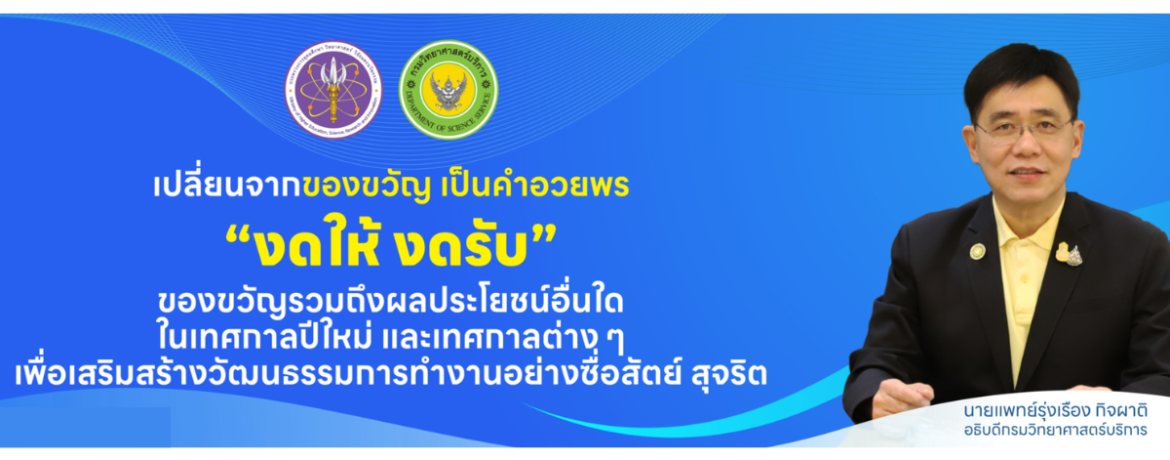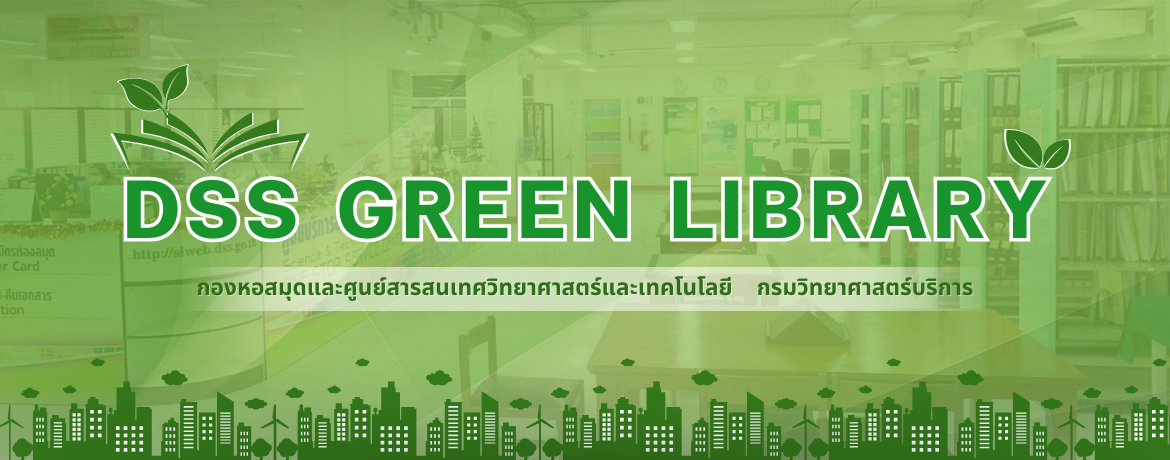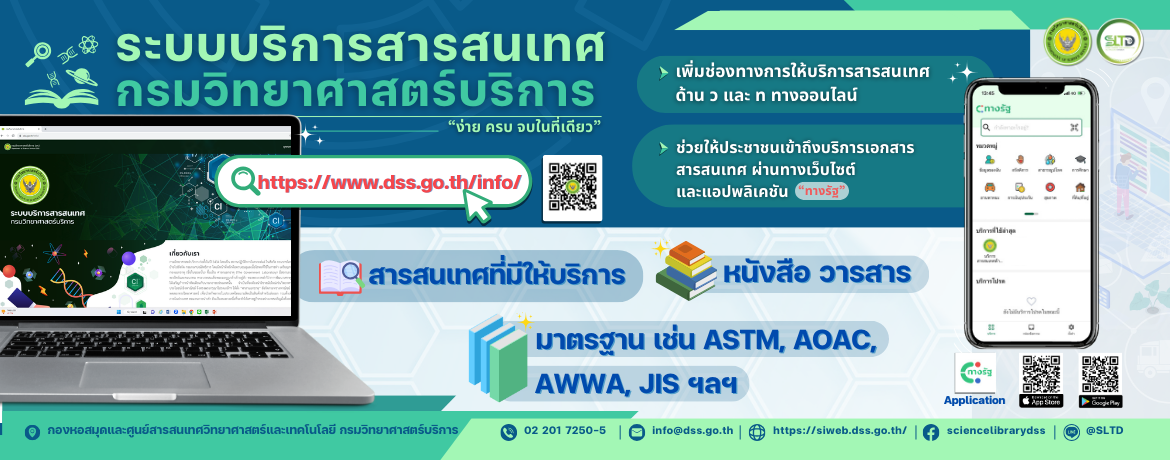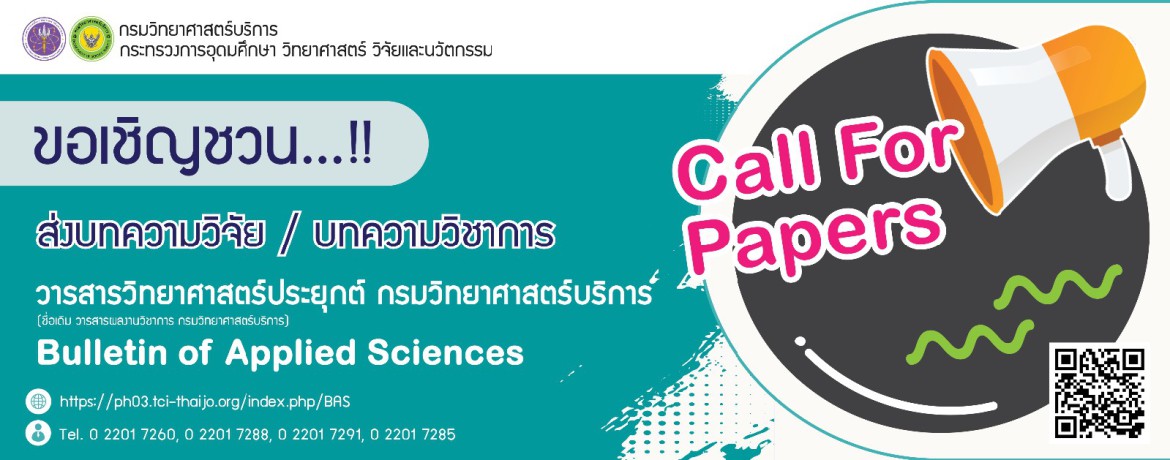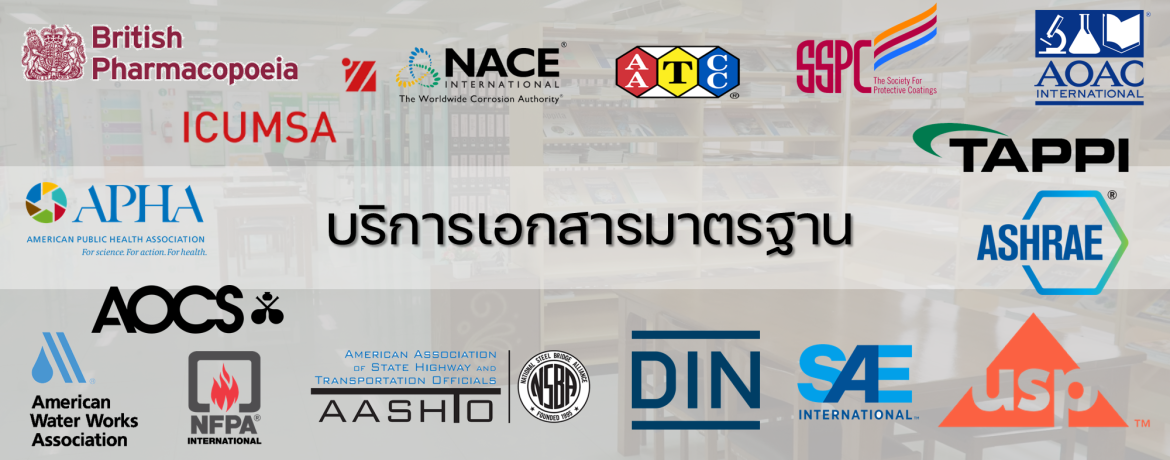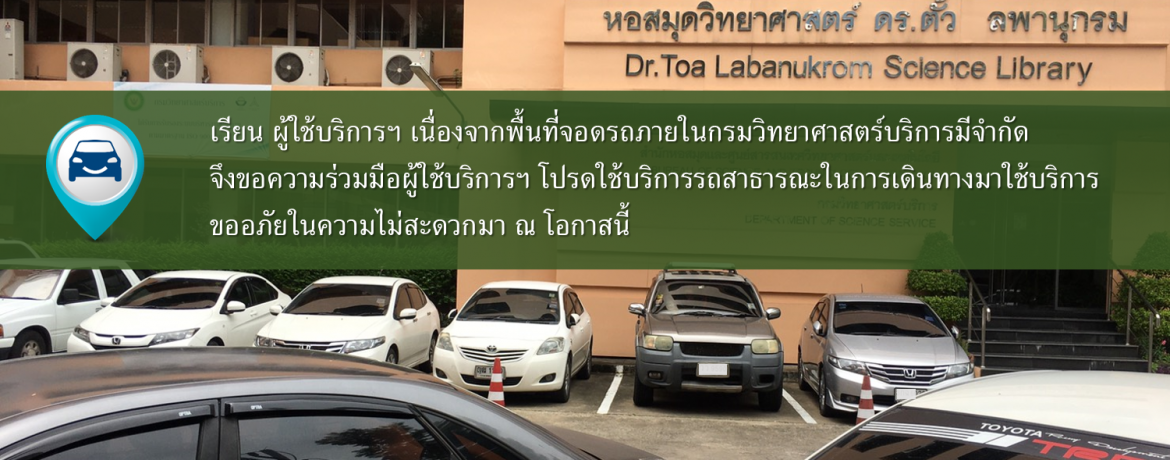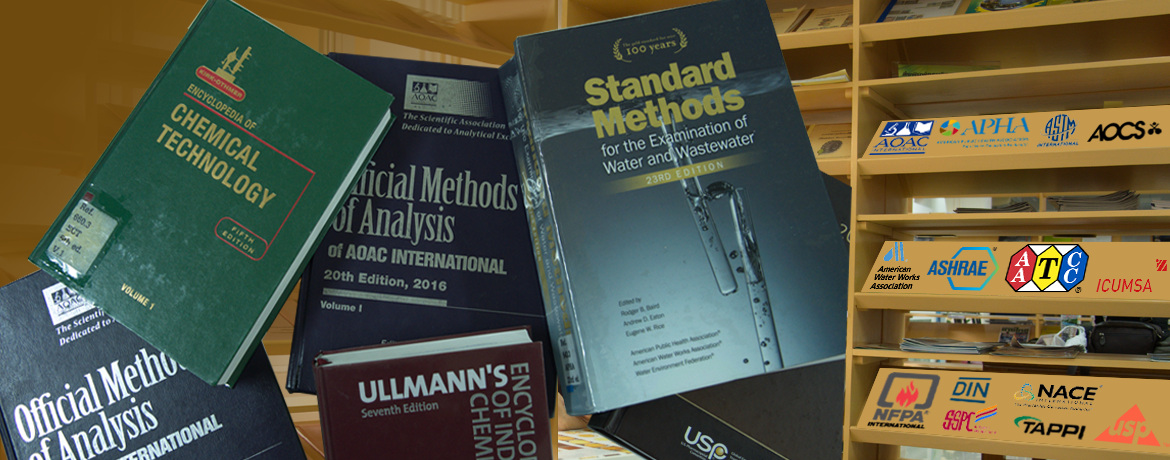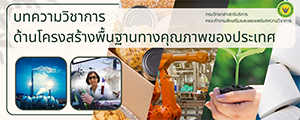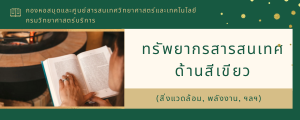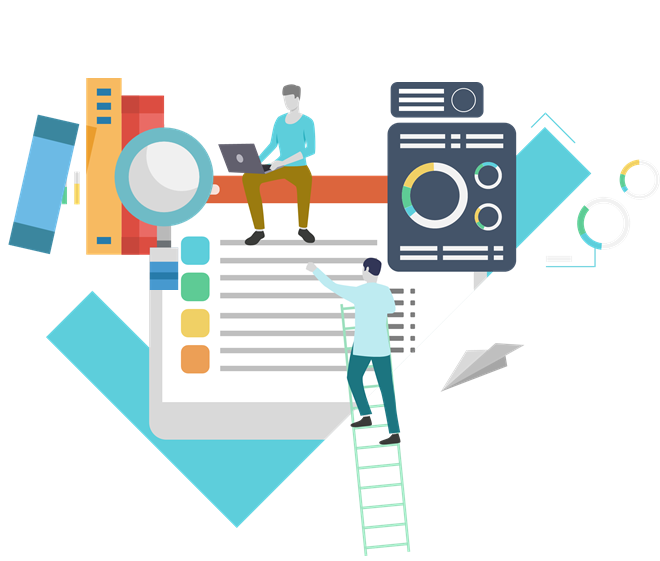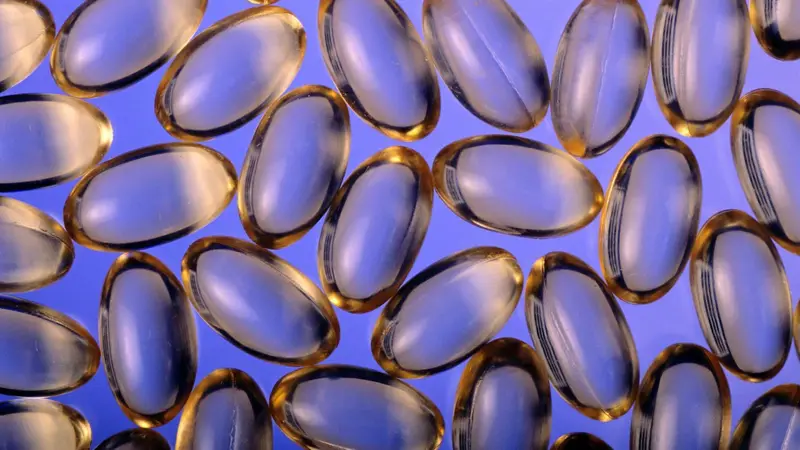| 1 |
CN108933307 |
A method for low-temperature integrated recycle of waste lithium ion batteries |
A method for low-temperature integrated recycle of waste lithium ion batteries is disclosed. The method includes (1) subjecting the waste lithium ion batteries to be recycled to discharging and air drying; (2) pre-freezing the pretreated batteries; (3) subjecting the pre-frozen batteries to freezing and cutting for coarse crushing; (4) subjecting the coarsely crushed batteries to freezing and impacting for fine crushing; and (5) sieving the sample after fine crushing, with an oversize product being battery shells and current collector materials and an undersize product being powder containingpositive and negative electrode materials. Through freeze crushing and sieving separation, electrode materials are efficiently separated from the shell material and current collector materials of thelithium ion batteries, low-temperature crushing does not generate heat accumulation so as to avoid the risk of explosion, and does not generate toxic or harmful gas so that the method is energy-saving, environmentally friendly and high in efficiency. Recovered products are good in quality, can be conveniently recycled, and have promotion value. |
| 2 |
CN108550942 |
All-component harmless recycling method of waste lithium ion battery |
The invention discloses an all-component harmless recycling method of waste lithium ion battery. the method comprises the following steps: pre-sintering the waste lithium ion battery in a resistance furnace, mechanically crushing the pre-sintered waste lithium ion battery, and sorting to obtain positive pole plates and negative pole plates; performing wet stripping on the positive and negative pole plates to achieve an aim of efficiently separating positive active materials and the carbon powder from the aluminum and copper foil, wherein the recycling rate of the lithium-nickel-cobalt-manganese in the separated positive active material is greater than 99%, and the content of each of the aluminum and copper in the positive active material is less than 0.05%. The method disclosed by the invention is simple and easy to realize, two-stage harmless absorption treatment is performed on the electrolyte and organic substance which are hard to recycle in the pre-sintering process, and the problem that the electrolyte volatilizes to pollute the environment in the crushing process of the waste lithium ion battery is solved. The positive active material in the waste lithium ion battery is effectively and thoroughly separated from the aluminum foil by using the wet stripping, and valuable metals in the positive active material containing the nickel, the cobalt, the manganese and the lithiumare efficiently recycled through a wet recycling procedure. The method disclosed by the invention is short in process flow, low in production cost, environment-friendly, and easy in industrialization |
| 3 |
US6514311 |
Clean process of recovering metals from waste lithium ion batteries |
A process of recovering metals from waste lithium ion batteries, wherein the waste batteries are calcined and sieved to generate an ash containing metals and metal oxides. The invented process includes subjecting the ash to a dissolution etching treatment, and a filtration treatment, and separately using a membrane electrolysis method to separate out metal copper and cobalt, wherein the acid generated on the cathode side in the electrolysis process can be recovered through a diffusion dialysis treatment. After electrolysis, the solution rich in lithium ion, after precipitating the metal impurities by adjusting the pH value, can be added with a carbonate ion to form a lithium carbonate. |
| 4 |
US9147918 |
Effective recovery of lithium from lithium ion battery waste |
A process for recovering Li-ions can include: providing a composition having Li-ions to be extracted therefrom; removing materials from the Li-ions; introducing one or more cyclic siloxane to the Li-ions so as to form one or more cyclic siloxane-Li-ion complexes; extracting the one or more cyclic siloxane-Li-ion complexes by one or more liquid-liquid extraction steps; separating an organic phase having the cyclic siloxane-Li-ion complexes from an aqueous phase; removing water from the organic phase; filtering the organic phase to obtain a filtrate; and obtaining one or more Li-ions (e.g., Li salts) from the filtrate. |
| 5 |
CN108666645 |
Green peeling method for electrode material of waste lithium ion power battery |
The invention provides an overall peeling method for a cathode material and an anode material based on the characteristics of compact structure, complicated composition, harmful electrolyte containingand the like of a waste lithium ion battery, wherein aluminum foil is effectively separated from the cathode material in controllable conditions, and then cathode graphite is effectively separated from copper coil while the electrolyte is effectively recycle; the whole technology does not apply corrosive solutions such as strong base, strong acid and strong oxidant, the peeling process is fast and efficient, the composite solvent is low in cost, all sub-systems are linked with each other, thus the method is a green and environment-friendly method for circularly utilizing a waste lithium ion power battery. |
| 6 |
US20130287654 |
Leaching solution and metal recovery method |
A valuable metal recovery method of recovering metals from a lithium ion battery without using complicate steps and by a relatively simple and convenient facility is intended to be provided. For attaining the purpose, lithium is leached selectively from a positive electrode active material containing a composite oxide of lithium and transition metal elements by using a solution showing a weak acidity at a pH of 4 to 7 so that the high Li/Co selectivity is high and a Li recovery rate is high, and lithium is recovered from the leaching solution. By using a solute that the acidity of the acidic solution spontaneously disappears due to evolution of a gas after leaching of lithium, neutralization step is no more required and the volume of liquid wastes is decreased. |
| 7 |
CN107768760 |
Lithium resource and salt-alkali recycle method |
The invention discloses a lithium resource and salt-alkali recycle method, and belongs to the technical field of waste water processing. The lithium resource and salt-alkali recycle method comprises the following steps of (1) obtaining a filtering liquid, a clear liquid and sludge by a multi-stage precipitation and decontamination process; (2) performing nanofiltration on the filtering liquid to obtain concentrated water and a nanofiltration clear liquid; (3) absorbing lithium ions in the nanofiltration clear liquid by ion exchange resin; (4) recycling ethylene carbonate, dimethyl carbonate and distilled water by reduced pressure distillation, cooling, solidification and multi-effect evaporation processes; and (5) electrolyzing to obtain caustic soda by employing an ionic membrane method.By the lithium resource and salt-alkali recycle method, each constituent in high-salt/alkali waste water in a waste lithium battery is symmetrically recycled, 60-80% of waste water can be recycled, the salt-alkali recycle rate is 80-90%, the lithium resource recycle rate is 85-95%, and the recycle rate of the ethylene carbonate and the dimethyl carbonate is 80-85%. |
| 8 |
US10056656 |
Manufacturing method of high purity lithium phosphate from the waste liquid of the exhausted lithium-ion battery |
Provided is a method of manufacturing a high-purity lithium phosphate by utilizing a lithium waste liquid of a wasted battery. Lithium phosphate is manufactured and refined by using a minimized amount of sodium hydroxide and by using phosphate, lithium hydroxide, and an optimized pH condition, so that it is possible to manufacture high-purity lithium phosphate from which fine impurities which cannot be removed by cleaning are effective removed. A waste water treatment process of processing waste water as to be immediately discharged is integrated, so that the method is very efficient and environment-friendly. Therefore, since the high-purity lithium phosphate can be manufactured by utilizing a lithium waste liquid discarded in a wasted battery recycling process, the method has an effect in that the method is applied to a wasted battery recycling industry to prevent environmental pollution and facilitate recycling resources. |
| 9 |
US20180261894 |
METHOD AND APPARATUS FOR RECYCLING LITHIUM IRON PHOSPHATE BATTERIES |
Cathode material from exhausted lithium ion batteries are dissolved in a solution for extracting the useful elements Co (cobalt), Ni (nickel), Al (Aluminum) and Mn (manganese) to produce active cathode materials for new batteries. The solution includes compounds of valuable charge materials such as cobalt, nickel, aluminum and manganese dissolved as compounds from the exhausted cathode material of spent cells. However, LiFePO4 is a waste stream charge material often discarded due to infeasibility of recycling. LiFePO4 is precipitated as FePO4 and remains as a by-product, along with graphite and carbon, which are not dissolved into the solution. FePO4 can be separated from graphite and carbon, FePO4 can be separated from graphite and carbon, FePO.sub.4 can be used to synthesize LiFePO.sub.4 as cathode materials and graphite can be regenerated as anode materials. |
| 10 |
US20170077564 |
Method and apparatus for recycling lithium-ion batteries |
Cathode material from exhausted lithium ion batteries are dissolved in a solution for extracting the useful elements Co (cobalt), Ni (nickel), Al (Aluminum) and Mn (manganese) to produce active cathode materials for new batteries. The solution includes compounds of desirable materials such as cobalt, nickel, aluminum and manganese dissolved as compounds from the exhausted cathode material of spent cells. Depending on a desired proportion, or ratio, of the desired materials, raw materials are added to the solution to achieve the desired ratio of the commingled compounds for the recycled cathode material for new cells. The desired materials precipitate out of solution without extensive heating or separation of the desired materials into individual compounds or elements. The resulting active cathode material has the predetermined ratio for use in new cells, and avoids high heat typically required to separate the useful elements because the desired materials remain commingled in solution. |
| 11 |
WO2018192120 |
Method for efficiently separating metal current collector of positive electrode material of waste lithium ion battery |
Disclosed is a method for efficiently separating a metal current collector of a positive electrode material of a waste lithium ion battery, comprising: leaching scraps using a volatile leaching agent; performing short-distance regeneration on the obtained leachate by means of rectification and the like to obtain a leaching agent, the leached mixed materials being separated aluminum foil and positive electrode powder; directly obtaining high-purity current collector metal and positive electrode powder by means of mechanical separation and cleaning; and further processing the positive electrode powder to recycle valuable elements. The leaching agent of the present invention can effective separate the current collector metal and the positive electrode powder, and obtain the high-purity current collector metal foil and positive electrode powder while reducing material loss; moreover, the leaching agent can be recycled and reused, so that secondary pollution is avoided; compared with the current processes such as high-temperature calcining/heating and high-temperature high-voltage separation, no high-temperature treatment is needed, and energy consumption is low; and compared with the existing processes such as organic soaking and alkali/acid leaching, the leaching agent consists of conventional weak acid or ammonia and/or ammonium salt, sources are extensive, the costs are low, and the efficiency is high. |
| 12 |
US20190131673 |
Method for recycling and refreshing cathode material, refreshed cathode material and lithium ion battery |
Provided is a method for recycling and refreshing a cathode material, a refreshed cathode material and a lithium ion battery. The method for recycling and refreshing the cathode material includes: 1) a cathode material recycled from a waste battery is mixed with a manganiferous salt solution; 2) an alkali aqueous solution is added to the mixture to react to obtain a manganese hydroxide coating cathode material; and 3) the manganese hydroxide coating cathode material is sintered with a lithium resource to obtain a refreshed cathode material. The refreshed cathode material has no obvious impurity phase and has good crystallinity, high initial charge-discharge efficiency and good cycling performance. |
| 13 |
US10189083 |
Method for recycling electrode materials of lithium ion batteries |
A method for recycling electrode materials of lithium ion batteries, including the following steps: (1) disassembling the waste lithium ion battery to get positive electrode and negative electrode, immersing the positive electrode and/or the negative electrode into ammonia, then washing by deionized water and drying the positive electrode and/or the negative electrode; (2) sintering the dried positive electrode and/or the negative electrode, and using mechanical method to separate electrode powder material from current collector to get positive electrode powder material and/or negative electrode powder material; (3) supplementing lithium to the positive electrode powder material, then processing the positive electrode powder material by milling, spray drying and sintering to obtain regenerated positive electrode material; or processing the negative electrode powder material by milling, spray drying and sintering to obtain regenerated negative electrode material. The method has advantages of energy saving, simple operation, short processing time and less pollution. |
| 14 |
CN109022802 |
Method for recycling lithium from waste lithium ion batteries |
The invention discloses a method for recycling lithium from waste lithium ion batteries, and relates to the technical field of recycling of the waste lithium ion batteries. The method includes the following steps that S1, battery powder is prepared, wherein firstly, the waste lithium ion batteries are collected in a centralized manner, the collected waste lithium ion batteries are broken into small blocks through a breaker, then metal iron and stainless steel shells are selected out through a magnetic separator, meanwhile, plastic is selected out with a pneumatic separation method, metal copper and metal aluminum are screened and separated out, and the battery powder containing copper-nickel-manganese-cobalt-lithium oxides can be obtained. By means of the method for recycling lithium fromthe waste lithium ion batteries, the battery powder is more fully dissolved, the dissolution efficiency is greatly improved, it is not needed to waste a large amount of time to stir mixed liquid of the battery powder and strong acid by people, the labor intensity of people is well relieved, the working efficiency of people is improved, the battery powder and the strong acid are rapidly and conveniently dissolved, and therefore great convenience is brought for people to extract lithium ions from the waste batteries. |
| 15 |
US 10,205,200 |
Method for recycling lithium-ion battery |
Provided herein is a method for recycling lithium-ion batteries in a polar solvent such as an aqueous media or water. The method disclosed herein isolates a mixture of anode and cathode materials from waste lithium-ion batteries. The separated electrode materials can easily be collected with high recovery rate, providing a rapid, efficient and low-cost method for recycling electrode materials from waste lithium-ion batteries. |
| 16 |
US7192564 |
Method for recycling spent lithium metal polymer rechargeable batteries and related materials |
The method relates to a pyrometallurgical and hydrometallurgical process for the recovery and recycling of lithium and vanadium compounds from a material comprising spent rechargeable lithium batteries, particularly lithium metal gel and solid polymer electrolyte rechargeable batteries. The method involves providing a mass of the material, hardening it by cooling at a temperature below room temperature, comminuting the mass of cooled and hardened material, digesting with an acid its ashes obtained by incineration, or its solidified salts obtained by molten salt oxidation, or the comminuted mass itself, to give a mother liquor, extracting vanadium compounds from the mother liquor, separating heavy metals and aluminium therefrom, and precipitating lithium carbonate from the remaining solution. |
| 17 |
US10103413 |
Method for removing copper and aluminum from an electrode material, and process for recycling electrode material from waste lithium-ion batteries |
The present invention provides a method for removing copper and aluminum from an electrode material and a process for recycling electrode material from waste lithium-ion batteries. The method for removing copper and aluminum from the electrode material comprises: subjecting the electrode material containing electrode active material, copper and aluminum to reaction with an aqueous solution, wherein the aqueous solution has a pH value of higher than 10, and comprises base, oxidizing agent and complexing agent. The process for recycling electrode material from waste lithium-ion batteries comprises: a) harvesting an electrode material containing electrode active material, copper and aluminum from waste lithium-ion batteries; b) removing copper and aluminum from the electrode material according to the foresaid method; and c) further purifying and regenerating the electrode active material for reuse in new lithium-ion batteries. The present invention thus provides a practical and efficient method for recycling active materials from waste lithium-ion batteries. |
| 18 |
CN108808151 |
Method for synchronously separating and recycling cobalt, lithium and manganese from cathode material of waste lithium ion battery |
The invention discloses a method for synchronously separating and recycling cobalt, lithium and manganese from a cathode material of a waste lithium ion battery. The method comprises the following steps of firstly, uniformly dividing a sample area of an electrolytic cell into four subareas by a polyethylene grid, respectively filling the same amount of solid powder, and slowly injecting deionizedwater into the third subarea; inoculating a sulfur oxide thiobacillus solution into the second subarea, placing the electrolyte cell after inoculating for 2 to 4 days at the room temperature, connecting the electrolyte cell and a direct-current power source through a cathode and an anode, and maintaining the electrolyte cell to run for 9 to 18 days; collecting the activated carbon, cathode precipitate and cathode liquid, so as to separate and recycle the cobalt, lithium and manganese from the cathode material of the waste lithium ion battery. The method has the advantages that the recycling process is greatly simplified, the operation is simple and convenient, the feasibility is strong, the production amount of secondary pollution waste liquid and the treatment cost in the process are reduced, and the resource and energy source are certainly saved. |
| 19 |
US6261712 |
Method of reclaiming cathodic active material of lithium ion secondary battery |
Disclosed is a method of reclaiming a cathodic active material of lithium ion secondary batteries. The lithium ion secondary battery is broken and the casing and the content are separated to remove the casing from the content. The content is dissolved into a mineral acid to separate remaining non-dissolved content from the mineral acid to obtain a liquid containing the cathodic active material represented by the formula: LiMO2, where M is a transition metal element: cobalt, nickel and manganese. A lithium salt is added to the liquid, and the cathodic active material is recovered from the liquid in the form of a mixture of lithium compound and the transition metal compound, which is calcined and reclaimed into the cathodic active material. |
| 20 |
CN108075203 |
Method to recycle valuable metal components in lithium-ion battery waste |
The invention discloses a method to recycle valuable metal components in lithium-ion battery waste. The method comprises: mixing well lithium-ion cathode and anode wastes, and performing thermal treatment at 800-1000 DEG C; grinding the sintering product, performing soaking-floatation treatment, reclaiming graphite floated up, filtering the rest solid-liquid mixture, and drying; reclaiming lithiumcarbonate from the filtrate by means of precipitating or evaporative crystallization; subjecting the solid material to electrochemical dissolution, and extracting the metal resources, nickel and cobalt. The method has the advantages that waste lithium-ion battery anode graphite is made full use as a reducing agent, the lithium resource in the anode material is reclaimed, and waste is maximally utilized; the high-value metal resources, such as nickel, cobalt and lithium, are selectively extracted, and the separation process is simple; the method rarely produces massive acidic-alkaline wastewater and is highly worthy of industrial application. |
| 21 |
CN107959080 |
Pretreatment method for recycling valuable elements of waste lithium-ion battery materials |
The invention discloses a pretreatment method for recycling valuable elements of waste lithium-ion battery materials. The method includes the following steps of mixing the waste lithium-ion battery materials with metal oxides according to a mass ratio of (10-100):1, and calcinating the mixture in the air or inert atmosphere to obtain calcinated residues, wherein the calcination temperature is 300-900 DEG C, and the heat preservation time is 30-300 minutes; adopting an acid leaching mode for disposing the calcinated residues to recycle nickel, cobalt, manganese, aluminum and lithium. The pretreatment method can achieve environment-friendly efficient recycling of the waste battery materials, and reduce environmental pollution of lithium battery recycling. |
| 22 |
US9614261 |
Process for recycling electrode materials from lithium-ion batteries |
Herein is disclosed a process for recycling electrode material from lithium-ion batteries, comprising harvesting a mixture of anode and cathode electrode materials from waste lithium-ion batteries, and separating the anode electrode material from the cathode electrode material by means of dense liquid separation. The mixed anode and cathode material is suspended in a liquid that has a density between those of the anode material and cathode material, such that the anode material rises to the top of the dense liquid and the cathode material sinks to the bottom of the dense liquid. The thus separated materials can easily be collected and further purified and regenerated for reuse in new lithium-ion batteries, providing an efficient and low-cost method for recycling electrode active materials from waste lithium-ion batteries. |
| 23 |
US6835228 |
Process of recovering valuable metals from waste secondary batteries |
A process of recovering metals from waste lithium ion/Ni—H/Ni—Cd batteries, wherein the waste batteries are calcined and sieved to generate an ash containing metals and metal oxides. The process includes subjecting the ash to a first dissolution etching treatment, a first filtration treatment to obtain a filtrate containing Cd ions which are crystallized as cadmium sulfate, a second dissolution etching treatment for the filtered solid, and a second filtration treatment to obtain a second filtrate. Fe+3, Al+3 and rare earth metal ions in the second filtrate are precipitated as hydroxides by adding a base to the second filtrate. The remaining solution was extracted and counter-extracted to obtain aqueous solutions of Co and Ni ions, which were subjected separately to a electrolysis to deposit Co and Ni metals. Li ions in the residue solution from the electrolysis of Ni was precipitated as carbonate by adding a soluble carbonate salt. |
| 24 |
US8835026 |
Recovery and synthesis method for metaloxidic cathodic active material for lithium ion secondary battery |
Disclosed are a recovery for a metaloxidic cathodic active material for a lithium ion secondary battery and a synthesis thereof by the recovery method, wherein the recovery method includes (a) dissolving a cathodic active material from a waste lithium ion secondary battery using sulfuric acid solution containing sulfurous acid gas to generate a solution containing metal ions, (b) injecting sodium hydroxide solution and ammonia solution in the solution containing the metal ions to fabricate an electrode active material precursor, and (c) filtrating the active material precursor, followed by drying and grinding, thus to fabricate a solid-state cathodic active material precursor, and the synthesis method is achieved by mixing the electrode active material precursor fabricated according to the recovery method with lithium carbonate or lithium hydroxide, followed by heat treatment, to generate a metaloxidic cathodic active material. |
| 25 |
CN107653378 |
Recycling method for valuable metal from waste nickel-cobalt-manganese lithium ion battery |
The invention relates to a method for recycling valuable metal from a waste nickel-cobalt-manganese lithium ion battery. The method comprises the following steps of: dismounting, discharging and crushing the battery, soaking crushed waste nickel-cobalt-manganese lithium ions into sulfuric acid with certain concentration, adding a reducing agent to strip positive and negative pole pieces, and leaching valuable metals of nickel, cobalt, manganese and lithium; and replacing leach liquor with iron powder to remove copper, carrying out hydrolyzing to remove iron and aluminum, and dosing an impurity-removed solution to synthesize an aluminum coated nickel, cobalt and manganese ternary positive electrode material precursor, evaporating and concentrating the synthesized solution, adding carbonateor introducing carbon dioxide to recycle lithium. According to the method disclosed by the invention, stripping and leaching are synchronously completed, chemical precipitation is performed to removecopper, iron and aluminum, slag amount is small, slag filter performances are good, and the impurity-removed solution is used for synthesizing the aluminum coated nickel, cobalt and manganese ternaryprecursor, so that the recovery rate of valuable metal is increased; and the recovery rate for nickel, cobalt and manganese is 96% or higher in the whole process, the total recovery rate of lithium is90% or higher, the technological process is short, operation is simple, equipment is less, and the cost is low. |
| 26 |
US2017200989 |
Relithiation in oxidizing conditions |
Examples are disclosed of methods to recycle positive-electrode material of a lithium-ion battery. One example provides a method including relithiating the positive-electrode material in a solution comprising lithium ions and an oxidizing agent, and after relithiating, separating the positive-electrode material from the solution. |
| 27 |
CN107623152 |
Resource recycling method for waste lithium ion power battery
|
The invention discloses a resource recycling method for a waste lithium ion power battery. The method comprises the following process steps: carrying out electro discharge treatment, dismantling treatment, incineration treatment, polymetallic material crushing treatment, polymetallic material acid leaching treatment, extracting treatment, sedimentation treatment, flue gas secondary combustion treatment, flue gas rapid cooling treatment, flue gas alkali spraying treatment, flue gas urea spraying treatment, flue gas adsorption treatment and the like on the waste lithium ion power battery. The resource recycling method for the waste lithium ion power battery can fully recycle valuable metals from the waste lithium ion power battery, improve the recovery and utilization rate of metal to the maximum extent, and realize the recycling of metal resources; the flue gas can be directly discharged after being subjected to the process treatments such as the secondary combustion treatment, rapid cooling treatment, alkali spraying treatment, urea spraying treatment and adsorption treatment, the environmental protection index during the process of recycling and utilization of the waste lithium ion power battery is improved, no secondary pollution is generated, cleaner production is realized, and the economic benefits and environmental benefits are significant. |
| 28 |
US9212406 |
Valuable metal recovery method |
Provided is a method for improving the recovery rate of valuable metals such as cobalt when drying the battery waste of lithium ion batteries and the like. A second alloy excellent in terms of iron-cobalt separation performance and containing a small amount of iron is obtained by performing: a pre-oxidation step (ST20) for roasting and pre-oxidizing battery waste containing aluminium and iron; a melting step (ST21) for obtaining a molten product by melting the battery waste after the pre-oxidation step; a first slag separation step (ST22) for separating and recovering first slag containing aluminium oxide from the molten product; a second oxidation step (ST23) for oxidizing a molten first alloy after the first slag separation step; and a second slag separation step (ST24) for separating and recovering a second slag containing iron from a second alloy after the second oxidation step (ST23). |
| 29 |
CN108380036 |
Waste gas treatment device and method during recycle process of negative electrode materials of lithium ion battery |
The invention discloses a waste gas treatment device and method during the recycle process of negative electrode materials of a lithium ion battery. The device comprises an induced draft fan, a wastegas treatment chamber, an active carbon adsorption chamber and a chimney, wherein the waste gas treatment chamber is filled with branches and leaves of vegetation; the active carbon adsorption chamberis filled with active carbons. According to the device, the waste gas passes through the branches and leaves of vegetation with better gas permeability, and it is due to the fact that the self-temperature of the waste gas can heat the branches and leaves of the vegetation, vegetation fragrance is promoted to be released to neutralize the putrid odor of the waste gas; bioactive components contained in the branches and leaves of the vegetation can react with waste gas components; in addition, moistures in the waste gas are in contact with the branches and leaves of the vegetation, after the waste gas is adsorbed and intercepted, the humidity of the waste gas can be kept to advantageously release the bioactive components, the waste gas undergoes the treatment of the waste gas treatment chamber and enters into the active carbon adsorption chamber, the odor is removed, and standardized discharge is performed on the waste gas through the chimney. |
| 30 |
CN207753130 (U) |
Waste lithium ion battery electrolysis fluid recovery unit |
The utility model discloses a waste lithium ion battery electrolysis fluid recovery unit, including 3 electrolyte dissolvents of establishhing side by side to and and consecutive solid -liquid separation ware, filter equipment, filtrate collecting device and the vacuum distillation unit of each electrolyte dissolvent, be equipped with agitating unit in the electrolyte dissolvent, its top is equipped with the feed inlet, and the bottom is equipped with the discharge gate, and its discharge gate is connected the feed inlet of solid -liquid separation ware, the discharge gate of solid -liquid separation ware links to each other with filter equipment, filter equipment's liquid outlet then links to each other with filtrate collecting device, vacuum distillation unit is connected to filtrate collecting device's liquid outlet. The utility model provides a waste lithium ion battery electrolysis fluid recovery unit utilizes organic solvent to dissolve out respectively to carry out solid -liquidseparation behind the electrolyte to the electrolyte of realization in with waste lithium ion battery and pole piece, diaphragm material separation, thus realize separately respectively by recycle'spurpose. |
| 31 |
CN107959076 |
Waste lithium ion battery processing method |
The invention provides a waste lithium ion battery processing method. The waste lithium ion battery processing method comprises S1, crushing battery cells to obtain crushed battery cells and volatileorganics; S2, performing low-temperature gasification and pyrolysis on the crushed battery cells to obtain pyrolysis gas and solid residues; S3, burning the pyrolysis gas and the volatile organics toobtain flue gas; S4 spraying lime milk into the flue gas for deacidification reaction to convert phosphorous acid gas inside the flue gas into calcium phosphate and fluorous acid gas into calcium fluoride; dedusting and then emitting the reacted flue gas; S5, fine-crushing and screening the solid residues to obtain powder and metal pieces; S6, recycling iron, aluminum and copper in the metal pieces; S7, acid-leaching and then filtering the powder to obtain filter liquor, and preparing precursor materials with the filter liquor. The waste lithium ion battery processing method provides a complete waste lithium ion battery processing route to recycle metal resources and meanwhile to perform harmless treatment on the organics and hazardous materials, thereby being a recycling, green and environment-friendly processing process. |



